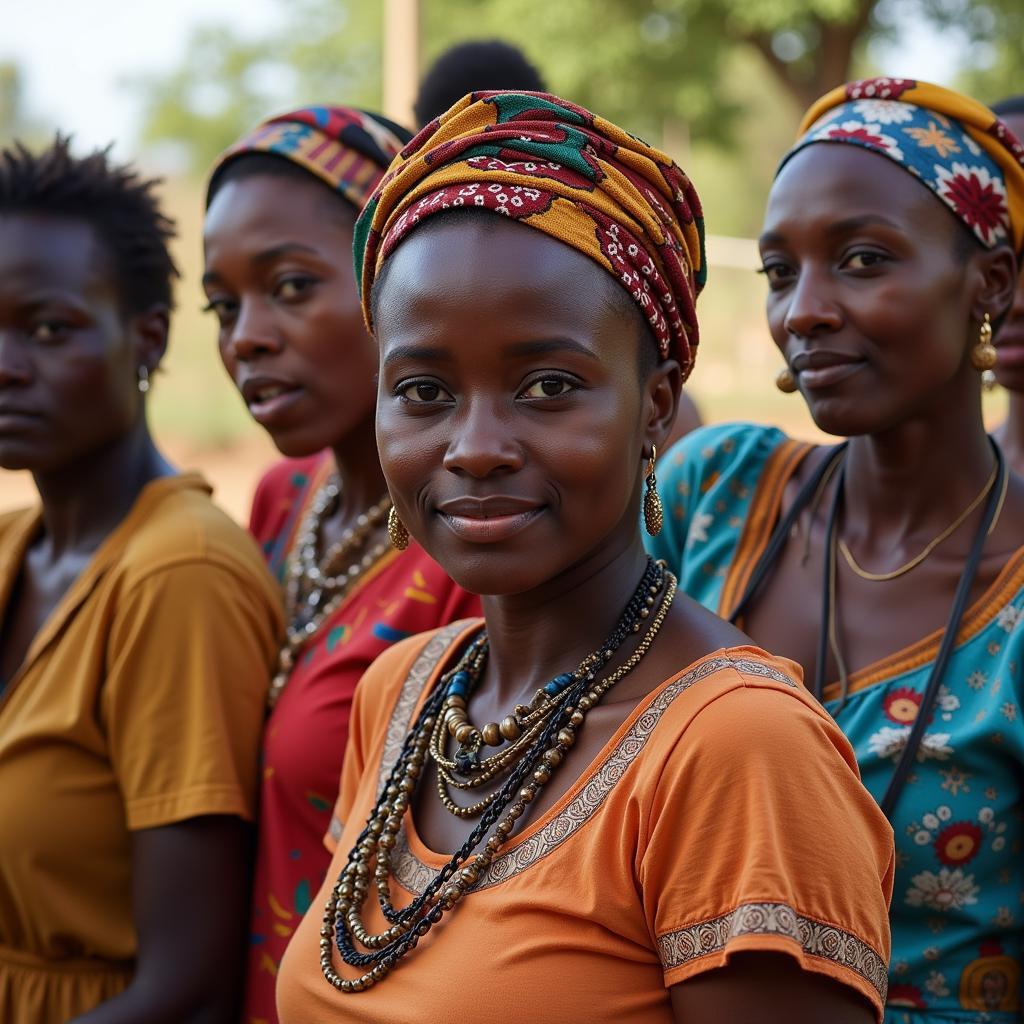Unveiling the Brilliance of the African Golden Weaver
The African Golden Weaver, a small bird with a vibrant personality, is a common sight across sub-Saharan Africa. These remarkable creatures are renowned for their intricate nests and striking plumage, making them a fascinating subject for bird enthusiasts and nature lovers alike. Let’s delve into the captivating world of these avian architects.
The Art of Nest Building: An Architectural Marvel
African golden weavers are master weavers, constructing elaborate nests from grass and other plant fibers. These nests are not only aesthetically pleasing but also functional, providing a safe and secure haven for their young. The male weaver meticulously crafts the nest, using his beak and feet with impressive dexterity. The nests vary in shape and size, often hanging from branches of trees near water sources, offering protection from predators. Their nests are a testament to their remarkable skill and adaptability. They even incorporate materials like plastic fibers, demonstrating their resourcefulness.
What makes these nests so unique? Their intricate design and construction are a marvel of natural engineering. The male weaver typically builds multiple nests to attract females, showcasing his building prowess. The female then inspects these nests, choosing the one that meets her standards of quality and safety.
A Splash of Gold: The Weaver’s Plumage
The male African golden weaver is a sight to behold, particularly during breeding season. His vibrant golden-yellow plumage is eye-catching, making him a standout amongst the foliage. This brilliant display serves to attract females, who are generally less colorful, with a more subdued palette of yellows and browns. This difference in coloration is a striking example of sexual dimorphism in birds.
The vibrant yellow plumage of the male African golden weaver isn’t just for show; it plays a crucial role in courtship rituals. The brighter and more intense the yellow, the more attractive the male is to potential mates.
Habitat and Distribution: Across the African Savanna
African golden weavers are found across sub-Saharan Africa, inhabiting a variety of habitats, including grasslands, savannas, and wetlands. Their distribution is influenced by the availability of suitable nesting sites and food sources, such as seeds and insects. They are highly adaptable and can thrive in diverse environments. For those interested in exploring countries beginning with the letter ‘G’ on the African continent, check out this resource on african countries starting with g. Understanding their range helps us appreciate their ecological role in these diverse ecosystems.
Where can you find African Golden Weavers?
Primarily in sub-Saharan Africa, specifically in areas with access to water sources and suitable nesting trees.
Diet and Feeding Habits: A Grainivore’s Delight
As primarily granivores, African golden weavers feed mainly on seeds and grains. Their diet also includes insects, providing a source of protein, especially during the breeding season. They are agile foragers, capable of extracting seeds from various plants. Sometimes they supplement their diet with nectar and fruit, demonstrating their dietary flexibility.
What does the African Golden Weaver eat?
Seeds, grains, insects, nectar, and fruit make up the majority of their diet.
Social Behavior: A Communal Lifestyle
African golden weavers are highly social birds, often forming large colonies. These colonies provide a sense of security and allow for cooperative breeding. Within the colony, individuals communicate through a variety of calls and displays, maintaining social cohesion. Observing their interactions reveals the complex social dynamics within these avian communities. It’s fascinating to witness their collective efforts in foraging, nesting, and raising young.
Conservation Status: A Species of Least Concern
Currently, the African golden weaver is classified as a species of least concern by the International Union for Conservation of Nature (IUCN). However, ongoing habitat loss and degradation pose a potential threat to their populations. Continued monitoring and conservation efforts are crucial to ensure their long-term survival. It is essential to protect the habitats they rely on to maintain their healthy populations. To learn more about another unique African bird, read about the african bunting.
Conclusion: The Golden Jewel of Africa’s Avifauna
The African golden weaver is a remarkable bird, captivating with its intricate nests, vibrant plumage, and fascinating social behavior. These avian architects play a vital role in the ecosystems they inhabit, and their continued presence enriches the biodiversity of Africa. Understanding their life history and conservation needs is essential for appreciating and protecting these golden jewels of the African savanna.
FAQs
- What is unique about the African golden weaver’s nest? Their nests are intricately woven and often hang from branches near water, providing protection from predators.
- What is the difference between male and female African golden weavers? Males have vibrant golden-yellow plumage, while females are more subdued in color.
- Where are African golden weavers found? They are found across sub-Saharan Africa.
- What do African golden weavers eat? They primarily eat seeds and grains, supplemented by insects, nectar, and fruit.
- What is the conservation status of the African golden weaver? They are currently listed as a species of least concern.
- Are African golden weavers social birds? Yes, they are highly social and often live in large colonies.
- How do male weavers attract females? They build elaborate nests and display their vibrant plumage.
Need assistance? Contact us 24/7: Phone: +255768904061, Email: kaka.mag@gmail.com, or visit us at Mbarali DC Mawindi, Kangaga, Tanzania.

